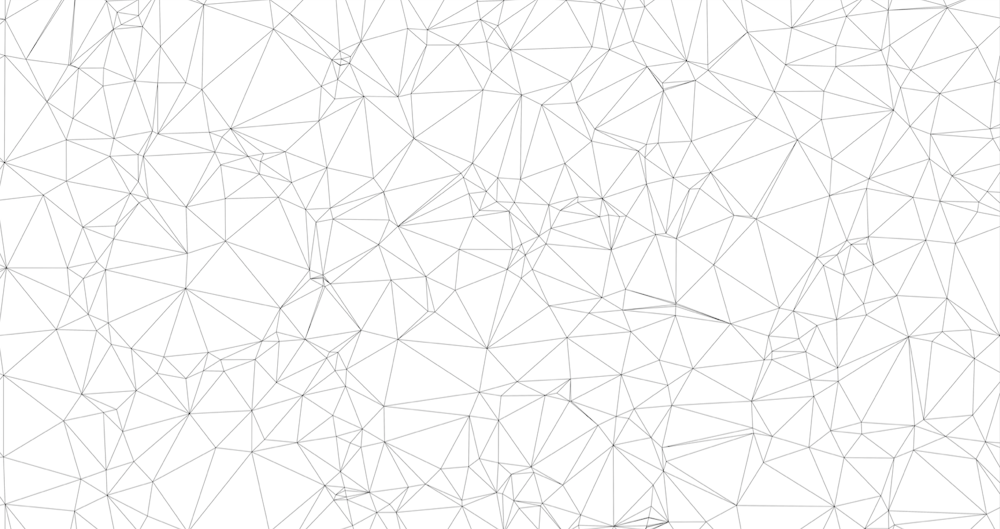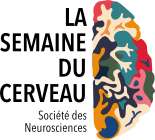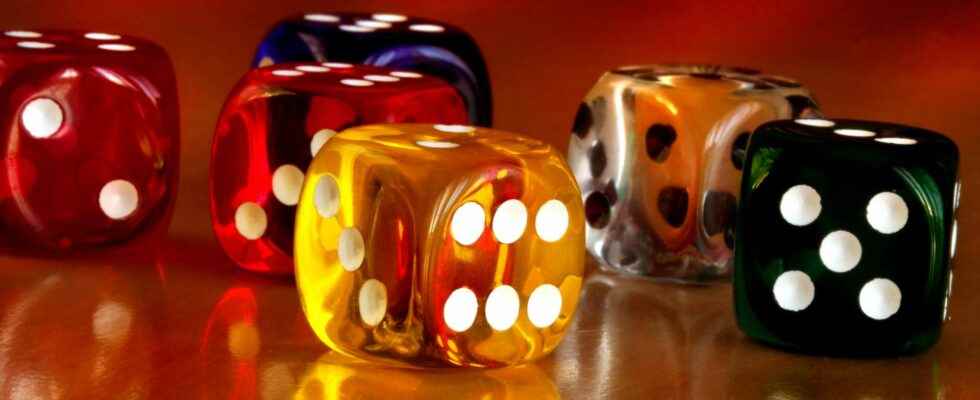In Marivaux’s most famous play The game of love and chancethe author reverses the roles of the characters, and chance is invited to guide their destinies.
In the same way, our brain is tossed about by chance, both in a lottery and in the uncertainties and ambiguities revealed in the vision by the optical illusions.
So much so that one can attribute to an evil spirit the fact that the slice of bread falls on the side of the jam, or that the plug of the cable USB always be in the wrong direction.
Chance invites itself as a character in its own right in the cognitionand we can wonder about the role that it can play in the functioning of our brain.
Lotteries play with our brain
Between sports betting, online gambling, scratch cards and multi-million dollar lottery, games of chance have always played an important part in our lives. These can quickly become addictive and reveal in an astonishing way the dependence between chance and the ancestral mechanisms of the functioning of our brain. For example, we are ready in a lottery to play a littlemoney to win a lot, even if we know full well that, as it is very rare to win, we are guaranteed to lose almost every time!
Yet our brain pushes us to surrender to this irrational pleasure, a form “drug-free addiction”. In theory, the rules are pre-established and long-term gains can be predicted. And with a minimum of hindsight, we can realize that certain strategies presented by specialized journals, for example the so-called “law of series”, have no basis in terms of pure logic. In the case of the national lottery, for example, everything is done so that the drawing of balls on a given day is completely independent of that which is done the following day. Although it happened recently that a lottery in South Africa gave the series of consecutive numbers 5, 6, 7, 8, 9 and 10, we can mathematically justify that such series appear: it is extremely rare, but also necessary because in the long run, all draws are possible, including the most surprising.
The fact that we find them surprising actually reveals a cognitive bias on our perception of chancea trace of often unconscious beliefs.

In this work by Étienne Rey, “Trames”, created in collaboration with our research group, points are randomly generated and connected by triangles. Trace of our cognitive and perceptual biases, our eye interprets coincidences and groupings to find structures that could be interpreted – even if in this example, chance is total. © Étienne Rey, provided by the author. All rights reserved
From chance to “beliefs”
Cognitive biases are not only revealed in statistics on frequencies of occurrence of events such as those encountered in the lottery, and the brain seems to manipulate complex forms of “beliefs” about its environment. But in this context, how to define such a “belief”?
A major contribution of Antoine-Augustin Cournot is to have demystified an origin of hazard which helps to better understand this concept. Economist, he studied during the XIXand century of the processes of establishing economic monopolies. Wondering about the hazards disturbing his experimental data, he made this simple proposal: if the impression of chance, rather than being linked to autonomous processes, came from the observer’s ignorance of the origin of the data ?
For example, if you observe two players of go while you know nothing about the rules of the game, you will have the impression that the moves are made at random, whereas, for experienced players, this game does not involve luck at all, but a high level of strategy. From this perspective, the impression of chance — and therefore its management by our brain — can be caused by very deterministic processes even though the observer is unaware of the causes of their interactions. In mirror of the impression of chance, a “belief” would be, in this context, a measure of a “degree of evidence” of the observer on this knowledge.
So, instead of being passive to chance, our brains had to evolve to manipulate these “beliefs”, or these “interpretations”. a priori of the situation he is facing. However, the biological mechanisms at play are poorly understood and there is still a great difference between the biological intelligence revealed in the brain and the artificial one that is constructed in the automatons Where robotsor even more recently with the computers or thedeep learning. For these, there is no place for chance whereas, on the contrary, our brain uses chance, and it happens that, by ” serendipity », scientific discoveries are due to chance.
At the theoretical level, probability theory, a branch of mathematics, makes it possible to define a “belief” as a precise mathematical object assigning probabilities to the various possible events.
For example, suppose you are trying to determine the orientation of trees in a forest: the trunks are mainly oriented vertically, but a few are bent or twisted. Equipped with our theoretical tool, this measurement physical can be represented by the likelihood probability of each of the possible orientations. Often, this probability distribution can be represented by its most probable value and by the dispersion around this value. This type of formalization makes it possible in particular to manipulate different degrees of “belief” by so-called “inference” rules.
In practice, this notion makes it possible to refine the algorithms classics ofartificial intelligence and allows in particular to integrate several probability distributions from different sources. For example, one can infer the orientation of a tree from fragments of its image, while giving more weight to precise information (for example the image of the edge of its trunk) compared to what is less (a view of foliage).
Could such a mechanism be at work in the brain?
A dynamic process
Recently, we were able to directly question neurons biology on this hypothesis. We focused on the primary visual cortex, a region on the surface of the brain that is essential for vision. Since the experiments of Hubel and Wiesel in 1959we know that the neurons of this region respond preferentially to the orientation of the contours in the image, for example that of a light bar which would be presented in front of our eyes.
To extend the scope of these seminal experiments in the neurosciences of vision, we have synthesized stimulation visuals in which we explicitly manipulate the precision of this orientation, like in the photos in the image below. Thus we add to the images a new dimension which represents the fact that a visual object can be more or less oriented by modifying the precision of this orientation. This can thus be transformed from a perfectly oriented bar, at an intermediate orientation, to a texture completely undirected.
This new dimension makes it possible, for example, to distinguish what is drawn by the sharp outline of a visual object compared to the texture of an object for which the precision is less (such as the texture on the right of the image). Those neurophysiology experiments revealed that when these stimulations are presented, the activity of the population of neurons gradually constructs a representation of the orientation, but also of its precision, and therefore of the degree of belief in this orientation. Our results also indicate that the neurons communicate with each other differentially according to this precision, in particular that a less fine precision integrates its information more slowly.
To intuitively understand this dynamic mechanism, one can imagine that like a painter adjusting a touch of paint on his work, the overall representation of our visual environment is gradually constructed from these fragments. In the future, new experiments are needed to better understand these mechanisms. In particular, we want to understand how we integrate information dynamically, in the constant flow of stimuli that our sensory system must process.
On the usefulness of chance
To conclude, we invoked chance to better understand the brain. Even if it can be a source of confusion, it is a mechanism in the face of which the brain does not remain passive, and it constitutes a central notion to give meaning to the complex mechanisms that take place there.
Thus, a better knowledge of chance allows the optimal integration of the “bits” of information distributed in our brain and eventually leading to a unified awareness of the world around us. Echoing Marivaux’s comedy, let’s hope that chance allows us to unite neuroscience and computer science to better understand intelligence.
In addition to the workshops offered throughout France by the Society of Neurosciences, at the origin of Brain Week, Futura highlights the latest scientific advances concerning our ciboulot. Cognition, psychology or even unusual and extraordinary stories, a collection ofitemsof questions answers and of podcast to be found all this week under the tag ” brain week » and on our social networks!

Interested in what you just read?
